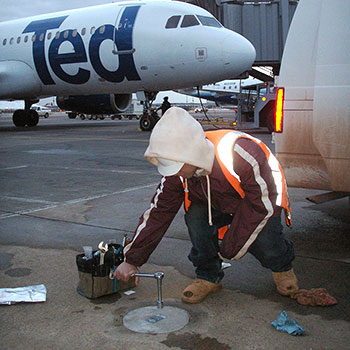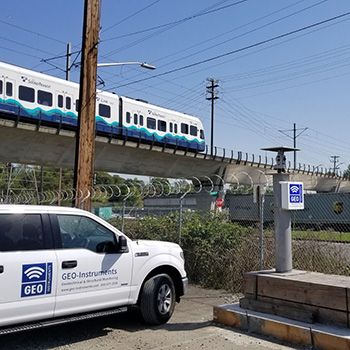GEO-Instruments monitors building settlement, soil settlement, and ground improvement. Settlement monitoring provides early detection of problems, guides corrective actions, and helps mitigate risk of property damage, project delays, and litigation. Datasheet






Building Settlement
Settlement in buildings is typically the result of changes in the foundation soil below the building, but is monitored on the building itself, since access to the foundation soil is not is not available. Common parameters for monitoring building settlement include:
Cracks in floor slabs and walls are monitored with crackmeters.
Misalignment or separation of incoming utilities or expansion joints can be monitored with jointmeters.
Settlement of floors and walls can be monitored with hydrostatic level cells or automated settlement profilers.
Rotation of structural elements can be monitored by tiltmeters.
Displacement of walls and structural elements can be monitored in three dimensions by AMTS systems.
Convergence of ceiling to floor distances can be monitored by laser displacement sensors.
Surface & Subsurface Settlement
Settlement or heave can result from excavation and support of excavation, tunnelling and compensation grouting, dewatering, and flooding. Common parameters for monitoring include:
Water tables are monitored with observation wells and piezometers, typically installed outside excavation perimeters or along tunnel alignments.
Subsurface displacements of utilities potentially affected by excavation or tunneling can be monitored with utility monitoring points.
Vertical settlement profile along the axis of a borehole can be monitored by multipoint borehole extensometers.
Horizontal settlement profile along highway foundations, railroad track beds, and tank foundations can be monitored with horizontal shape arrays or automated settlement profilers.
Surface displacements of roads and railroad tracks can be monitored by AMTS systems and road prisms.
Ground Improvement
Ground improvement techniques, such as surcharging of compressible soils also induce settlement. Settlement measurements are used to evaluate the progress of the treatment. See Monitoring Soil Consolidation
Settlement Plates provide settlement data corresponding to the load of the surcharge placed on the compressible soil. Measurements can be automated with AMTS systems or GNSS sensors.
Piezometers monitor the expected changes in pore-water pressure.
Construction Control
Compensation grouting is used to replace ground loss caused by the passage of a tunnel boring machine.
A horizontal shape array, installed just above the planned path of the TBM can monitor ground loss and correction in near real time. Early detection allows grouting at lower pressure, avoiding damage to the tunnel liner and minimizing heave in the foundation soil of the structure above.
GeoCloud Automation operates 24/7 to deliver measurements from the project work site to secure project web sites. GeoCloud automation features wireless data acquisition, web-based data management, and website access to data.
Wireless data acquisition systems forward measurements to GeoCloud servers for processing. Dedicated GeoCloud websites provide access to alerts, graphs, and reports.







